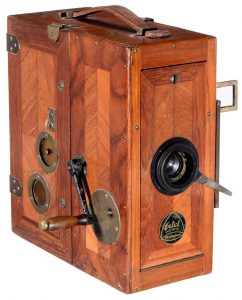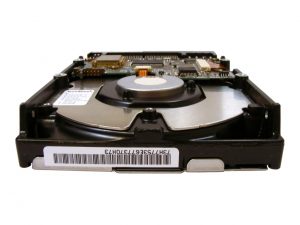\r\n
VIDEO TO HD
\r\n
\r\n
\r\n
We handle almost all analog, optical, magnetic and digital formats in house. Most popular formats we handle include: VHS, VHS-C, SVHS, WVHS, Video 8, Hi-8, Digital 8, BetaMax, DV, MiniDV, DVC, DVCPro, DVCPro HD, HDV, MicroMV, U-Matic, U-Matic SP, Betacam, Betacam SP, Betacam SX, Digital Betacam, MPEG IMX, XDCAM, HDCAM, D5 HD, HDCAM-SR, CD, DVD, MiniCD, MiniDVD, Blu-ray, Mini Blu-ray, HD DVD, LaserDisc and more. We handle all video standards – NTSC, PAL, SECAM, PAL-M, PAL-N.
Yes, we do everything in house. Your tape would not leave our facility. Aside for tape repair, which is done by an outside vendor, and upon which we advise to the customer.

We do have an outside vendor we use for truly rare formats, such as 1”, 2”, M-II, D-2, D-3 and the likes. We would always do our best to help.
It depends. We do not transfer any mass produced content that is copyright protected. Some exceptions would be content that is no longer mass produced and/or discontinued, or foreign content that can no longer be purchased. It must be for personal use and enjoyment only.
We would love to help. Please contact us here: CONTACT

Typically, 1 hour of video in HD would equal about 100GB (vs. about 30GB per 1 hour of SD). You would need larger drive space for HD video.
In one word – experience. The longer answer is that today all consumer electronic devices are geared to HD, which has been around for over 10 years now. There is also currently a beginning of a trend to go to 4K, which is 4 times the resolution of HD. So in reality, it is very probably that you and your family and friends would enjoy your family videos on an HD viewing platform. Most TVs do a very bad job with internal up-conversion (up-scaling SD to HD). Most people who will do this at home without the proper broadcast tools will also not reach the same results. We are basically enabling you to enjoy and experience your family memories in the best possible way adjusted to today’s technology. Feel free to email or call us with any additional info.\r\n\r\n \r\n\r\nPlease also go [HERE] to learn more about SD to HD aspect ratio conversion
Our rule of thumb is that you do not want to buy any drives that you can find in the large retailers. Think of those mostly as disposable drives. Your VHS tape has lasted 30 years. Those drives will doubtfully last 5. That is a very important consideration. While not a direct advice, we like companies that make performance oriented drives – the kind that is being used by professionals for critical media. Some of the companies we like are: LaCie, G-technology, Glyph, CalDigit and a few others. We are a LaCie authorized reseller, however, any of these brands in our opinion are good. When it comes to your family memories, don’t buy the cheapest drive you can find. It really pays off to invest this one time in a much better quality product.
The idea behind long-term storage strategies is to keep it cost-effective and not over-do it. We generally recommend combining two media types – whether it is drive and cloud; or drive and DVD; or magnetic (LTO) and cloud. It truly depends from one person to the next, however, when you add one more layer of protection and redundancy to your library archiving, you are truly mitigating a potential catastrophic loss. It is also important to consider the overall cons and pros of each media. For example, drives could get deleted or go bad. DVDs are very sturdy. Cloud storage can one day be deleted or breached and may have an ongoing cost. LTOs are designed to last for several decades, but are not as accessible. Also, customers should keep in mind that electronic media, whether flash / solid-state or rotational components, is far more sensitive to the elements and susceptible to damage than magnetic and optical legacy media, so long-term storage conditions are far more critical. If you have any questions, please [contact us]. There is not necessarily a simple fit-all solution.
Yes, we handle EXT2 / EXT3. We currently do not handle EXT4.
We do offer 3 different NTSC to PAL (and vice versa) conversion options with different pricing. The reason for the different options is that not all costumers necessarily want to pay for the best possible quality, which requires using very expensive tools and making special arrangements, all of which are very time consuming. Regardless of the level of standard conversion, each option is of professional quality. Feel free to [contact us] with additional questions.
In short – no. Let’s start that ProRes, which is a compression standard, has many flavors, going from the lowest quality of proxy to the highest quality of 4444 XQ, however, it is important to note that ProRes is still considered to be a lossy compression. When archival quality is desired, there are the uncompressed options, such as 8,10 and 12 bit RGB uncompressed video, as well as DPX, EXR, Tiff sequential files and others, which provide what is defined as “uncompressed trillions of colors” type of standard. Having said all that, given ProRes wide acceptance as a format on both Mac and PC systems, as well as the relative smaller file size and overall high quality image, it is probably one of the most popular and efficient formats out there, and should suffice for most users and purposes, including many professional uses. Feel free to [contact us] with additional questions.
\r\n
\r\n
We handle almost all analog, optical, magnetic and digital formats in house. Most popular formats we handle include: VHS, VHS-C, SVHS, WVHS, Video 8, Hi-8, Digital 8, BetaMax, DV, MiniDV, DVC, DVCPro, DVCPro HD, HDV, MicroMV, U-Matic, U-Matic SP, Betacam, Betacam SP, Betacam SX, Digital Betacam, MPEG IMX, XDCAM, HDCAM, D5 HD, HDCAM-SR, CD, DVD, MiniCD, MiniDVD, Blu-ray, Mini Blu-ray, HD DVD, LaserDisc and more. We handle all video standards – NTSC, PAL, SECAM, PAL-M, PAL-N.
Yes, we do everything in house. Your tape would not leave our facility. Aside for tape repair, which is done by an outside vendor, and upon which we advise to the customer.

We do have an outside vendor we use for truly rare formats, such as 1”, 2”, M-II, D-2, D-3 and the likes. We would always do our best to help.
It depends. We do not transfer any mass produced content that is copyright protected. Some exceptions would be content that is no longer mass produced and/or discontinued, or foreign content that can no longer be purchased. It must be for personal use and enjoyment only.
We would love to help. Please contact us here: CONTACT

Typically, 1 hour of video in HD would equal about 100GB (vs. about 30GB per 1 hour of SD). You would need larger drive space for HD video.
In one word – experience. The longer answer is that today all consumer electronic devices are geared to HD, which has been around for over 10 years now. There is also currently a beginning of a trend to go to 4K, which is 4 times the resolution of HD. So in reality, it is very probably that you and your family and friends would enjoy your family videos on an HD viewing platform. Most TVs do a very bad job with internal up-conversion (up-scaling SD to HD). Most people who will do this at home without the proper broadcast tools will also not reach the same results. We are basically enabling you to enjoy and experience your family memories in the best possible way adjusted to today’s technology. Feel free to email or call us with any additional info.\r\n\r\n \r\n\r\nPlease also go [HERE] to learn more about SD to HD aspect ratio conversion
Our rule of thumb is that you do not want to buy any drives that you can find in the large retailers. Think of those mostly as disposable drives. Your VHS tape has lasted 30 years. Those drives will doubtfully last 5. That is a very important consideration. While not a direct advice, we like companies that make performance oriented drives – the kind that is being used by professionals for critical media. Some of the companies we like are: LaCie, G-technology, Glyph, CalDigit and a few others. We are a LaCie authorized reseller, however, any of these brands in our opinion are good. When it comes to your family memories, don’t buy the cheapest drive you can find. It really pays off to invest this one time in a much better quality product.
The idea behind long-term storage strategies is to keep it cost-effective and not over-do it. We generally recommend combining two media types – whether it is drive and cloud; or drive and DVD; or magnetic (LTO) and cloud. It truly depends from one person to the next, however, when you add one more layer of protection and redundancy to your library archiving, you are truly mitigating a potential catastrophic loss. It is also important to consider the overall cons and pros of each media. For example, drives could get deleted or go bad. DVDs are very sturdy. Cloud storage can one day be deleted or breached and may have an ongoing cost. LTOs are designed to last for several decades, but are not as accessible. Also, customers should keep in mind that electronic media, whether flash / solid-state or rotational components, is far more sensitive to the elements and susceptible to damage than magnetic and optical legacy media, so long-term storage conditions are far more critical. If you have any questions, please [contact us]. There is not necessarily a simple fit-all solution.
Yes, we handle EXT2 / EXT3. We currently do not handle EXT4.
We do offer 3 different NTSC to PAL (and vice versa) conversion options with different pricing. The reason for the different options is that not all costumers necessarily want to pay for the best possible quality, which requires using very expensive tools and making special arrangements, all of which are very time consuming. Regardless of the level of standard conversion, each option is of professional quality. Feel free to [contact us] with additional questions.
In short – no. Let’s start that ProRes, which is a compression standard, has many flavors, going from the lowest quality of proxy to the highest quality of 4444 XQ, however, it is important to note that ProRes is still considered to be a lossy compression. When archival quality is desired, there are the uncompressed options, such as 8,10 and 12 bit RGB uncompressed video, as well as DPX, EXR, Tiff sequential files and others, which provide what is defined as “uncompressed trillions of colors” type of standard. Having said all that, given ProRes wide acceptance as a format on both Mac and PC systems, as well as the relative smaller file size and overall high quality image, it is probably one of the most popular and efficient formats out there, and should suffice for most users and purposes, including many professional uses. Feel free to [contact us] with additional questions.
\r\n
\r\n
Here are several ways to contact us
\r\n